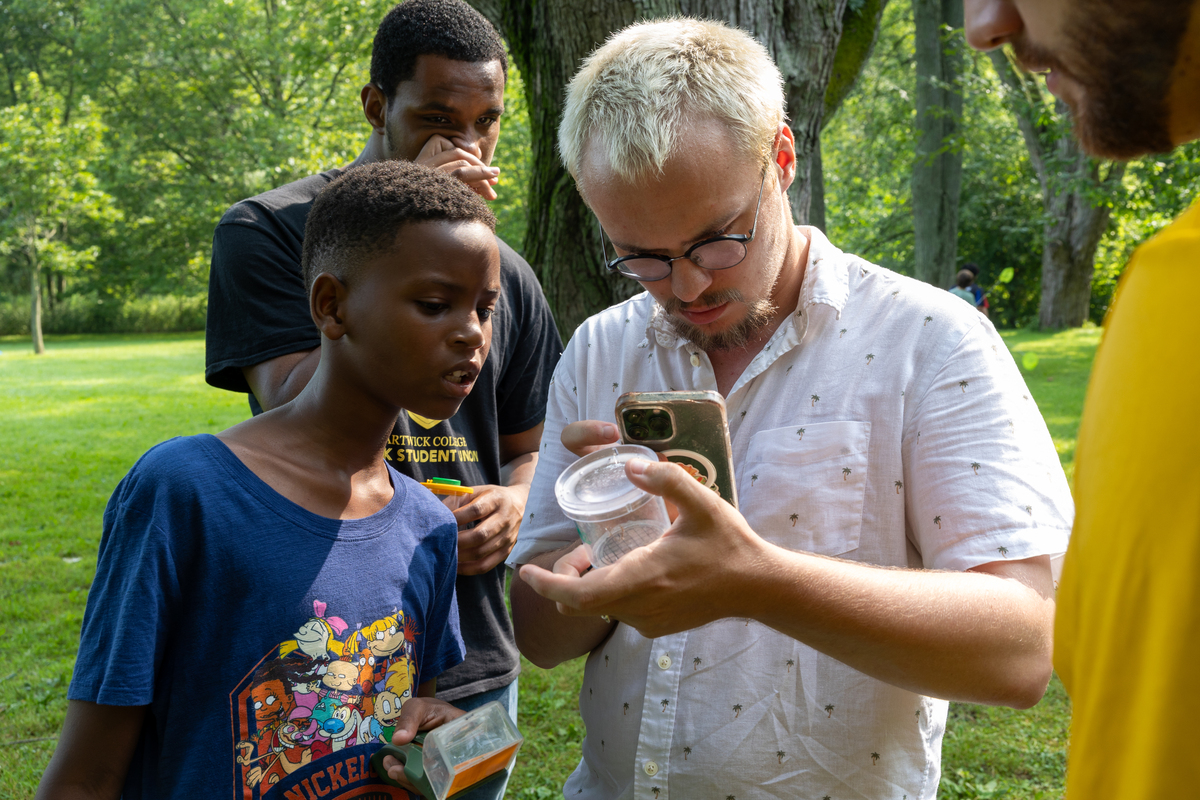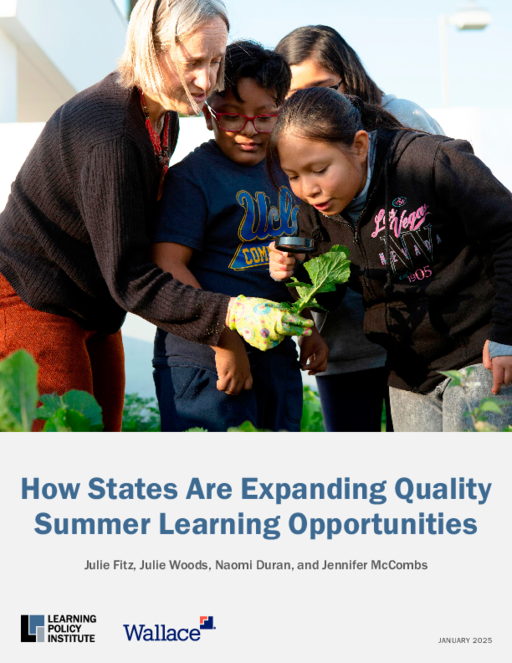Breadcrumb
- Wallace
- Reports
- How States Are Expanding Quality...
How States Are Expanding Quality Summer Learning Opportunities

- Author(s)
- Julie Fitz, Julie Woods, Naomi Duran, and Jennifer McCombs
- Publisher(s)
- The Learning Policy Institute
- DOI Link
- https://doi.org/10.54300/910.329
Summary
How we did this
This study draws on interviews with education leaders from nine geographically and politically diverse states, conducted during the 2023–24 school year. These leaders represented a range of organizations, including state education agencies, governor’s offices, state afterschool networks, and other nonprofits involved in summer learning. The study sought to understand the policies and practices states have developed to expand access to high-quality summer learning.
High-quality summer learning programs can help to advance student academic and social growth. How can states better support students’ participation in quality summer learning opportunities? This report from the Learning Policy Institute identifies a range of successful policies and practices to expand and improve summer learning opportunities.
The report draws on case studies of nine geographically and politically diverse states: Georgia, Louisiana, Massachusetts, Michigan, New Mexico, Oregon, Tennessee, Texas, and Vermont. All benefited from federal funds to address Covid-related learning loss. As these funds wane, all are finding ways to continue supporting summer learning.
State Actions to Support Summer learning
While summer learning in each state looked different, state actions to support summer learning generally fell into five categories:
1. Garnering support for summer learning investments. States articulated clear summer learning goals and linked them with broader state priorities. They built coalitions to secure buy-in. They also identified consistent funding.
2. Implementing summer learning grant programs. States developed grant programs to support summer learning program providers. Providers included both school districts and community-based organizations. Programs focused on both academics and enrichment and student well-being.
3. Increasing access for priority groups. States used legislation and requests for proposals to prioritize student groups and address potential barriers to participation. Priority groups included students from low-income households, students performing below grade level, and those with diverse abilities, among others.
4. Promoting quality programming. States promoted quality by requiring or encouraging adoption of evidence-based practices. They provided training and issued guidance on quality. Some sought to strengthen their summer learning workforce through training and hiring assistance.
5. Collecting and using data. States collected and analyzed data to understand the impact of summer learning investments. Data included grant reports, provider and participant surveys, and interviews. Some states conducted standardized assessments.
The report provides examples of how different states navigated these areas and built summer learning support infrastructure. The report also identifies practices that contributed to state success.
The report concludes with policy considerations for states that want to expand access to high-quality summer programming. When well-designed and well-implemented, summer learning programs produce positive outcomes.
Examples of State Action
Tennessee passed 2021 legislation to advance student learning after the pandemic. The legislation required school districts to provide summer learning camps for priority students. The state has now allocated funding for grades 4 through 9 in perpetuity. In 2023, over 200,000 students attended the state’s summer learning camps.
In 2021, New Mexico initiated a paid summer internship program to promote post–high school readiness. High school students worked in county or tribal agencies. The state legislature has now allocated stated funding to grow the program. More than 2,700 students participated in 2023.
And Massachusetts established a summer learning grant program for statewide and regional nonprofits. These organizations sub-granted to local partners to provide student academic and enrichment opportunities. By 2023, state grant–funded afterschool and summer programs served over 10% of the state’s K–12 students.

In many states, the full potential of the summer months remains untapped. By investing in summer learning, states can better support the developmental and academic needs of students over the full year—not just during the months when school is in session.
Key Takeaways
- Well-implemented and well-attended summer learning programs have shown positive outcomes for participants in reading and math achievement, social development, mental health, school engagement, and decreased risk-taking behaviors.
- For many states, the full potential of summer to promote student academic and developmental growth remains untapped. By investing in summer learning, states can better support student growth over the full calendar year.
- State leaders can learn from other states’ successful strategies to continue investing in summer learning as federal pandemic funding wanes. They can adopt or modify those strategies that align with their unique state goals and contexts.
- While the political context and summer learning goals varied across the nine case study states, state actions to support summer learning generally fell into five categories: 1) Garnering support for summer learning investments; 2) Implementing state grant programs; 3) Increasing access for priority groups; 4) Promoting high quality programming; and, 5) Collecting and using data.

